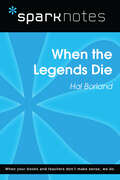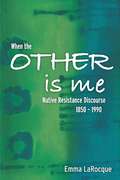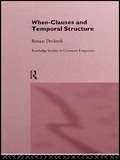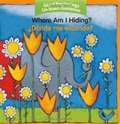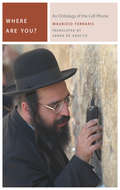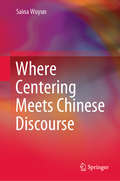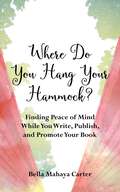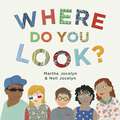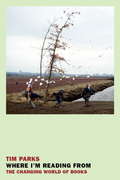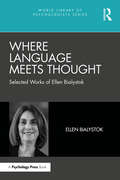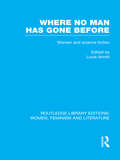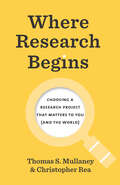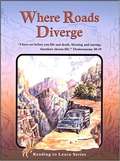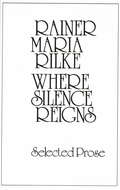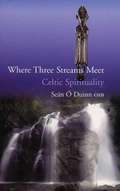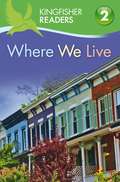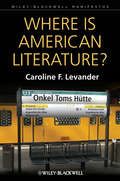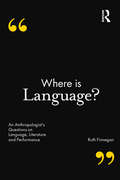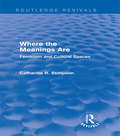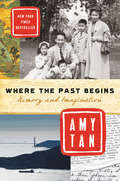- Table View
- List View
When the Legends Die (SparkNotes Literature Guide Series)
by SparkNotesWhen the Legends Die (SparkNotes Literature Guide) by Hal Borland Making the reading experience fun! Created by Harvard students for students everywhere, SparkNotes is a new breed of study guide: smarter, better, faster. Geared to what today's students need to know, SparkNotes provides: *Chapter-by-chapter analysis *Explanations of key themes, motifs, and symbols *A review quiz and essay topicsLively and accessible, these guides are perfect for late-night studying and writing papers
When the Other is Me: Native Resistance Discourse, 1850-1990
by Emma LaRocqueIn this long-awaited book from one of the most recognized and respected scholars in Native Studies today, Emma LaRocque presents a powerful interdisciplinary study of the Native literary response to racist writing in the Canadian historical and literary record from 1850 to 1990. In When the Other is Me, LaRocque brings a metacritical approach to Native writing, situating it as resistance literature within and outside the postcolonial intellectual context. She outlines the overwhelming evidence of dehumanization in Canadian historical and literary writing, its effects on both popular culture and Canadian intellectual development, and Native and non-Native intellectual responses to it in light of the interlayered mix of romanticism, exaggeration of Native difference, and the continuing problem of internalization that challenges our understanding of the colonizer/colonized relationship.
When-Clauses and Temporal Structure (Routledge Studies in Germanic Linguistics #No.2)
by Renaat H. DeclerckTense is one of the central issues of linguistics, and has been the focus of much attention in recent years. In this book, Declerck offers a detailed discussion of the temporal structures that are expressed by the combination of tense forms with the conjunction when.
Where Am I Hiding? / Dónde Me Escondo?
by American Heritage Dictionary EditorsLet the mischievous elephant acquaint young children with the magic of prepositions.
Where Are You?: An Ontology of the Cell Phone (Commonalities)
by Maurizio FerrarisThis book sheds light on the most philosophically interesting of contemporary objects: the cell phone. “Where are you?”—a question asked over cell phones myriad times each day—is arguably the most philosophical question of our age, given the transformation of presence the cell phone has wrought in contemporary social life and public space.Throughout all public spaces, cell phones are now a ubiquitous prosthesis of what Descartes and Hegel once considered the absolute tool: the hand. Their power comes in part from their ability to move about with us—they are like a computer, but we can carry them with us at all times—in part from what they attach to us (and how), as all that computational and connective power becomes both handy and hand-sized.Quite surprisingly, despite their name, one might argue, as Ferraris does, that cell phones are not really all that good for sound and speaking. Instead, the main philosophical point of this book is that mobile phones have come into their own as writing machines—they function best for text messages, e-mail, and archives of allkinds. Their philosophical urgency lies in the manner in which they carry us from the effects of voice over into reliance upon the written traces that are, Ferraris argues, the basic stuff of human culture.Ontology is the study of what there is, and what there is in our age is a huge network of documents, papers, and texts of all kinds. Social reality is not constructed by collective intentionality; rather, it is made up of inscribed acts. As Derrida already prophesized, our world revolves around writing. Cell phones have attached writing to our fingers and dragged it into public spaces in a new way. This is why, with their power to obliterate or morph presence and replace voice with writing, the cell phone is such a philosophically interesting object.
Where Centering Meets Chinese Discourse
by Saina WuyunThis book addresses the question: What can close discourse analysis contribute to the understanding of language? To do so, it presents a centering theory-based computational approach to discourse analysis concerning Chinese bei passive sentences, disposal ba constructions, ditransitive gei sentences, and locative fang sentences. The book first discusses the use of discourse analysis in the context of bei and ba constructions and then demonstrates how discourse analysis can contribute to the syntactic and semantic studies of these sentences. It also examines the various thematic roles differentiated in these four special sentence patterns, namely agent, recipient, theme/patient, and locative, and reveals the various degrees of discourse accessibility of these thematic roles. Exploring the correlation between centering theory and Chinese discourse, the book is a valuable resource for anyone interested in discourse analysis and Chinese special sentential structures, especially the formal approaches to these issues.
Where Do You Hang Your Hammock?: Finding Peace of Mind While You Write, Publish, and Promote Your Book
by Bella Mahaya CarterIn Where Do You Hang Your Hammock? seasoned coach and author Bella Mahaya Carter shows writers how to use their present circumstances as stepping-stones to a successful and meaningful writing life, navigated from the inside out. It encourages writers and authors to rethink their ambitions (which may be fueled by the tyrannical demands of the ego) and trust in their heartfelt purpose and values in the journey to becoming, or continuing on, as authors.Many writers believe their self-sabotaging thoughts are trustworthy and true. They take rejection personally. They surmise that if they don&’t achieve their goals they have failed, and lose sight of who they are and what matters most.This book is for writers looking for inspiration and for authors daunted by the publishing process, who might lack the requisite author platform to get published the way they dreamed, or whose careers may not be unfolding as expected. It aims to be the friend and trusted expert writers turn to when hijacked by their own thinking. Ultimately, it reminds authors that they are infinite creators.
Where Do You Look?
by Marthe Jocelyn Nell JocelynWhere do you look for glasses? On a shelf? Or on a face?In this playful exploration of homonyms, readers will discover the fun they can have with language. Is a wave at a beach? Or at a train station? Is a trunk in a garden? Or on an elephant? Kids will love the juxtaposition of words and meanings, and the detailed collage illustrations will have them coming back again and again. The mother and daughter team of Marthe and Nell Jocelyn know where to look for a story: Not in a skyscraper, but in the dictionary!
Where Humans Meet Machines: Innovative Solutions for Knotty Natural-Language Problems
by Amy Neustein Judith A. MarkowitzEditors Amy Neustein and Judith A. Markowitz have recruited a talented group of contributors to introduce the next generation of natural language technologies to resolve some of the most vexing natural-language problems that compromise the performance of speech systems today. This fourteen-chapter anthology consists of contributions from industry scientists and from academicians working at major universities in North America and Europe. They include researchers who have played a central role in DARPA-funded programs and developers who craft real-world solutions for corporations. This anthology is aimed at speech engineers, system developers, computer scientists, AI researchers, and others interested in utilizing natural-language technology in both spoken and text-based applications.
Where I'm Reading From
by Tim ParksWhy do we need fiction? Why do books need to be printed on paper, copyrighted, read to the finish? Do we read to challenge our vision of the world or to confirm it? Has novel writing turned into a job like any other? In Where I'm Reading From, the novelist and critic Tim Parks ranges over decades of critical reading--from Leopardi, Dickens, and Chekhov, to Virginia Woolf, D. H. Lawrence, and Thomas Bernhard, and on to contemporary work by Peter Stamm, Alice Munro, and many others--to upend our assumptions about literature and its purpose. In thirty-seven interlocking essays, Where I'm Reading From examines the rise of the "international" novel and the disappearance of "national" literary styles; how market forces shape "serious" fiction; the unintended effects of translation; the growing stasis of literary criticism; and the problematic relationship between writers' lives and their work. Through dazzling close readings and probing self-examination, Parks wonders whether writers--and readers--can escape the twin pressures of the new global system and the novel that has become its emblematic genre.
Where Is Fish?
by Abby Seaborne George HamblinThe fun and excitement of English and Language Arts learning continues in Grade 2 of Reading Street. This comprehensive and dynamic curriculum for homeschooling is geared toward young children who have some foundational English and Language Arts knowledge and are ready to strengthen their skills. Comprised of engaging activities, challenging content and weekly quizzes, Reading Street: Grade 2 is the next step in your child's path toward becoming a lifelong learner and reader. As with all Reading Street products, the Grade 2 system is formatted to help students meet certain age-appropriate goals. After completing this English and Language Arts homeschool program, your child should be able to: Read and comprehend two-syllable words. Identify common prefixes (such as pre-, un-, or re-) and suffixes (such as -able, -ad and -er). Correct mistakes made when reading out loud. Read books with two or more chapters. Understand the structure of stores (i. e. beginning, middle and end). Start selecting reading materials based on his/her own interests. Identify the "who," "what," "when," "where," "why" and "how" of the text. While the goals of second Grade English and Language Arts are numerous, Reading Street will help you craft engrossing lessons. Your child will garner important English and Language Arts skills while completing a workbook, reading stories and poems, and taking assessments. Planning these lessons will be easier than ever, as all Reading Street systems are broken down into weekly Big Ideas. All the work your child does on a given week is formulated around that single concept for an organized and challenging curriculum. With six easy-to-follow units, Reading Street: Grade 2 is the perfect tool for homeschooling parents. Your child will enjoy the reading selections and activities, and you'll love to see your student growing into a knowledgeable individual. We're confident that this product is the right one for you. For more information on the specific materials found in Grade 2 of Reading Street, check out the Features and Benefits page.
Where Is It?: A Turn-and-See Book (What's Next?)
by Cari MeisterTheodore and Violet trudge up the big sledding hill. Then they jump in their sleds and take off. Now which way are they going? You guessed it—down! Keep reading, guessing, and flipping the page to discover more position words.
Where Language Meets Thought: Selected Works of Ellen Bialystok (World Library of Psychologists)
by Ellen BialystokIn the World Library of Psychologists series, international experts present career-long collections of what they judge to be their most interesting publications – extracts from books, key articles, research findings, and practical and theoretical contributions.Ellen Bialystok has published widely in the field of cognitive development and decline across the lifespan. Her research uses behavioral and neuroimaging methods to examine the effect of experience on cognitive and brain systems with a focus on bilingualism. Her discoveries include the identification of differences in the development of cognitive and language abilities for monolingual and bilingual children, the use of different brain networks by monolingual and bilingual young adults performing cognitive tasks, and the postponement of symptoms of dementia in bilingual older adults. In other studies, she has investigated the effects of bilingual education on children’s development and the cognitive and brain consequences of bilingualism in older adults.Including a specially written introduction, in which Ellen Bialystok reflects on the role that language plays on thought, this collection will serve as a valuable resource for students and researchers of psycholinguistics, developmental psychology, and applied linguistics.
Where No Man has Gone Before: Essays on Women and Science Fiction (Routledge Library Editions: Women, Feminism and Literature)
by Lucie ArmittHow do women writers use science fiction to challenge assumptions about the genre and its representations of women? To what extent is the increasing number of women writing science fiction reformulating the expectations of readers and critics? What has been the effect of this phenomenon upon the academic establishment and the publishing industry? These are just some of the questions addressed by this collection of original essays by women writers, readers and critics of the genre. But the undoubted existence of a recent surge of women’s interest in science fiction is by no means the full story. From Mary Shelley onwards, women writers have played a central role in the shaping and reshaping of this genre, irrespective of its undeniably patriarchal image. Through a combination of essays on the work of writers such as Doris Lessing and Ursula Le Guin, with others on still-neglected writers such as Katherine Burdekin and C. L. Moore and a wealth of contemporaries including Suzette Elgin, Gwyneth Jones, Maureen Duffy and Josephine Saxton, this anthology takes a step towards redressing the balance. Perhaps, above all, what this collection demonstrates is that science fiction remains as particularly well-suited to the exploration of woman as ‘alien’ or ‘other’ in our culture today, as it was with the publication of Frankenstein in 1818.
Where Research Begins: Choosing a Research Project That Matters to You (and the World) (Chicago Guides to Writing, Editing, and Publishing)
by Christopher Rea Thomas S. MullaneyPlenty of books tell you how to do research. This book helps you figure out WHAT to research in the first place, and why it matters.The hardest part of research isn't answering a question. It's knowing what to do before you know what your question is. Where Research Begins tackles the two challenges every researcher faces with every new project: How do I find a compelling problem to investigate—one that truly matters to me, deeply and personally? How do I then design my research project so that the results will matter to anyone else?This book will help you start your new research project the right way for you with a series of simple yet ingenious exercises. Written in a conversational style and packed with real-world examples, this easy-to-follow workbook offers an engaging guide to finding research inspiration within yourself, and in the broader world of ideas.Read this book if you (or your students):have difficulty choosing a research topicknow your topic, but are unsure how to turn it into a research projectfeel intimidated by or unqualified to do researchworry that you’re asking the wrong questions about your research topichave plenty of good ideas, but aren’t sure which one to commit tofeel like your research topic was imposed by someone elsewant to learn new ways to think about how to do research.Under the expert guidance of award-winning researchers Thomas S. Mullaney and Christopher Rea, you will find yourself on the path to a compelling and meaningful research project, one that matters to you—and the world.
Where Silence Reigns
by Rainer Maria Rilke G. Craig HoustonIn this collection of excerpts from his essays, notebooks, and letters, pre-eminent modern poet Rainer Maria Rilke meditates on subjects as varied as a dolls, walking among trees, and the great sculptor Rodin. Where Silence Reigns, a sampling from his essays, notebooks, and letters, shows Rainer Maria Rilke (1875-1926), the pre-eminent modern poet of solitude and inwardness, seeking to reconcile his personal conflict between the claims of "life" and the claims of art. His subjects are commonplace, seemingly innocuous at times: the encounter between a man and a dog, a collection of dolls, a walk among trees. But always the deceptively simple external phenomenon is seen as the symbol, the catalyst of an intensely felt inner experience. As he confided to his friend Frau Wunderly-Volkart: "Oh, how often one longs to speak a few degrees more deeply! My prose... lies deeper... but one gets only a minimal layer further down; one's left with a mere intimation of the kind of speech that may be possible THERE where silence reigns." In addition to occasional pieces and notebook entries, this volume contains selections from the strange and haunting "Dream-Book," the lyrical "Lay of the Love and Death of Cornet Christoph Rilke," and the entire "Rodin-Book"--Rilke's appreciation of the great sculptor whom he had served as secretary.
Where Three Streams Meet: Celtic Spirituality
by Sean O'DuinnA comprehensive overview of ancient Celtic spirituality.
Where We Live
by Thea Feldman Brenda StonesCome along on a global journey to examine the fascinating array of places and spaces that people call home. Beginning with the basic idea of shelter, readers examine the wide variety of climates, materials, and geography where humans choose to live, from an amazing mountaintop palace in Yemen to the canals of Venice, houses on stilts, caravans, yurts and more, readers will emerge from this book with new vocabulary-houseboat, shutters, thatch-and a newfound appreciation for the home they call their own. <p><p>LEVEL 2: BEGINNING TO READ ALONE Simple and engaging, with plenty of interest and repetition. Vocabulary is easy and familiar, and sentences are mainly short and simple. Guided Reading Level: J
Where Words (Word Play)
by Carrie B. SheelyPlaygrounds, supermarkets, and libraries are just a few of the places kids might visit in a day. Bring these location words to young learners, and watch their vocabularies grow! Words are carefully matched to engaging photos that will keep children captivated from beginning to end.
Where is American Literature? (Wiley-Blackwell Manifestos #53)
by Caroline F. LevanderWhere is American Literature? offers a spirited and compelling argument for rethinking the way we view American literature in relation to the nation while powerfully demonstrating why it continues to matter in a global age. A refreshing and accessible investigation into the various locations - linguistic, geographical, virtual, ideological - where American writing is produced and consumed Takes a highly original approach by viewing US literature spatially rather than chronologically or thematically, retuning our understanding of the subject The book offers a vital intervention in current debates over the impact of digital technologies on the production and reception of literature, ensuring that the field remains lively and dynamic Invites readers to reconsider the subject by questioning current perspectives on, and approaches to, US literature, offering a range of fresh perspectives on familiar texts and topics
Where is Language?: An Anthropologist's Questions on Language, Literature and Performance (Criminal Practice Ser.)
by Ruth FinneganLanguage is central to human experience and our understanding of who we are, whether written or unwritten, sung or spoken. But what is language and how do we record it? Where does it reside? Does it exist and evolve within written sources, in performance, in the mind or in speech? For too long, ethnographic, aesthetic and sociolinguistic studies of language have remained apart from analyses emerging from traditions such as literature and performance. Where is Language? argues for a more complex and contextualized understanding of language across this range of disciplines, engaging with key issues, including orality, literacy, narrative, ideology, performance and the human communities in which these take place. Eminent anthropologist Ruth Finnegan draws together a lifetime of ethnographic case studies, reading and personal commentary to explore the roles and nature of language in cultures across the world, from West Africa to the South Pacific. By combining research and reflections, Finnegan discusses the multi-modality of language to provide an account not simply of vocabulary and grammar, but one which questions the importance of cultural settings and the essence of human communication itself.
Where the Meanings Are: Feminism and Cultural Spaces (Routledge Revivals)
by Catharine R. StimpsonFirst published in 1990, this collection of essays in literary criticism, feminist theory and race relations was named one of the top twenty-five books of 1988 by the Voice Literary Supplement. The title covers such subjects as black literature; the reconstruction of culture, changing arts, letters and sciences to include the topics of women and gender; and, the nature of family and the changing roles of women within society. As such, Catharine Stimpson employs a transdisciplinary approach, to encourage greater understanding of the differences among women, and thus socially-constructed differences in general. Where the Meanings Are tells of some of the arguments within feminism during the re-designing and designing of cultural spaces, as post-modernism began to change the boundaries of race, class, and gender. It will therefore be of great value to students and general readers with an interest in the relationship between gender and culture, sex and gender difference, feminist theory and literature.
Where the Past Begins: Memory and Imagination
by Amy TanIn Where the Past Begins, bestselling author of The Joy Luck Club and The Valley of Amazement Amy Tan reveals herself in a way she never has before, delving into her childhood, adolescence, family history, beginnings as a writer and professional life to explore the answers to questions of purpose and meaning that we all ask ourselves as we get older. Moving from her childhood in Oakland and growing up with her Chinese parents through her success as a novelist, Amy Tan delves into her creative interests in music, the paralysis of beginning a new project, journal-writing and travelling. Where the Past Begins chronicles the making of a writer. With characteristic humor and poignant observation, Tan weaves a nontraditional introspective narrative that is as complex and vibrant as this beloved American novelist’s fiction. Interspersed with direct correspondence between the author and her editor, the book will give fans and critics unparalleled insight into the author’s process, her thoughts on the literary enterprise, and her singularly warm, intelligent mind.
